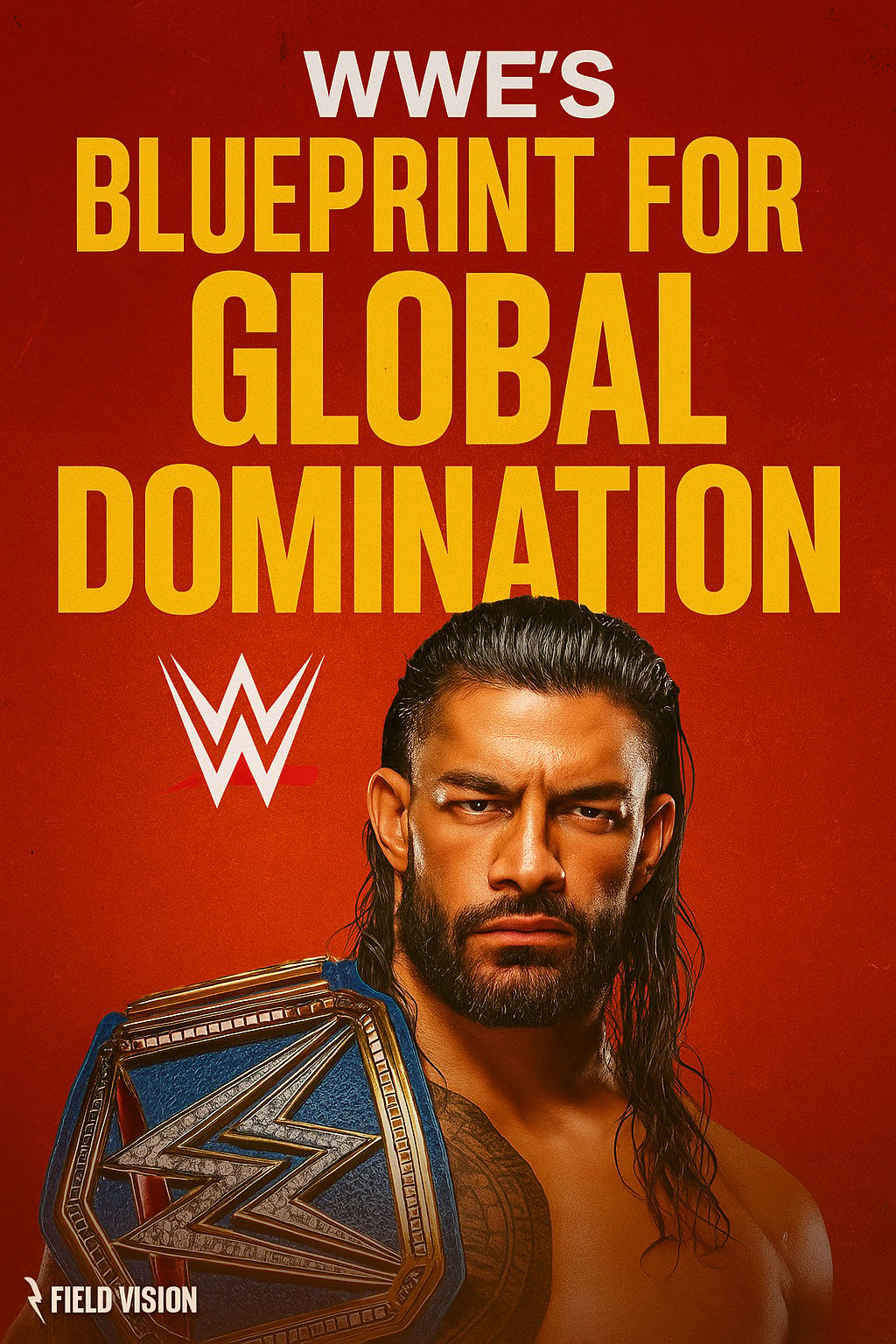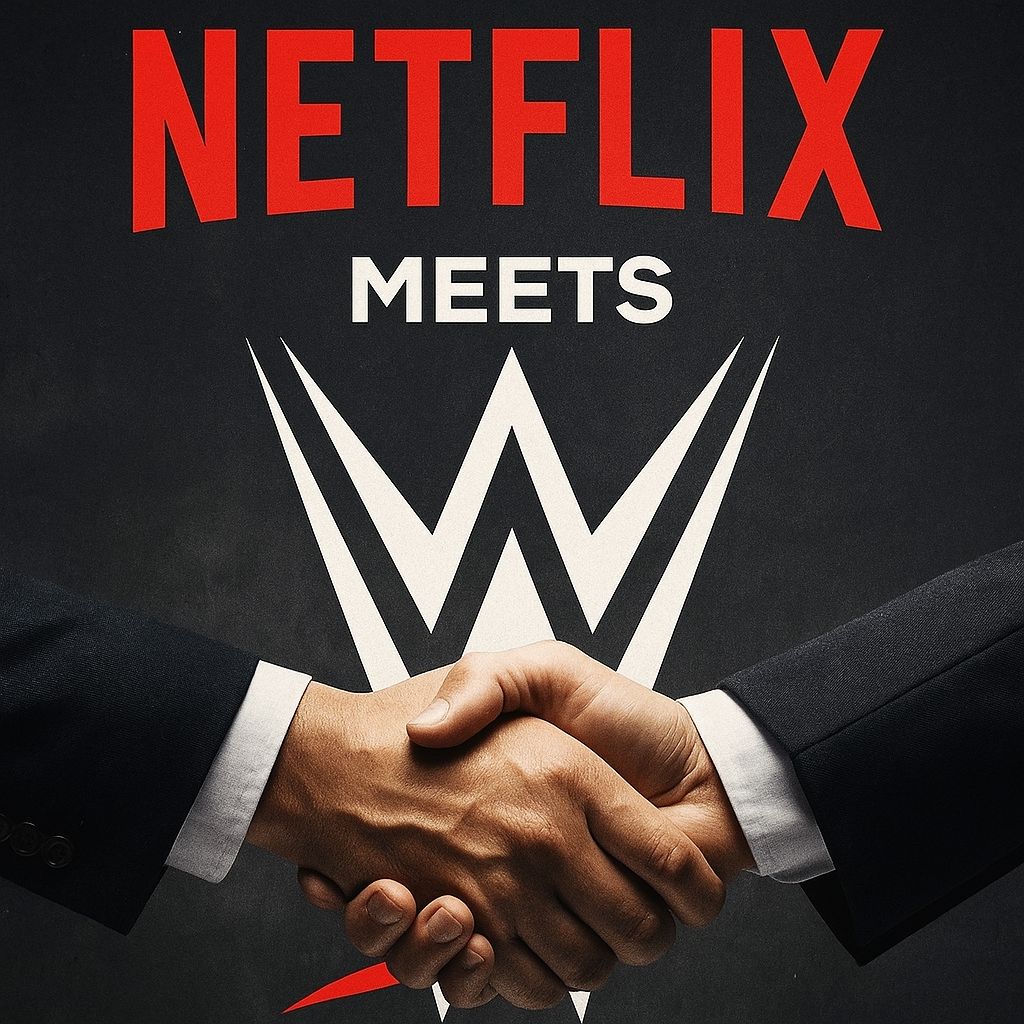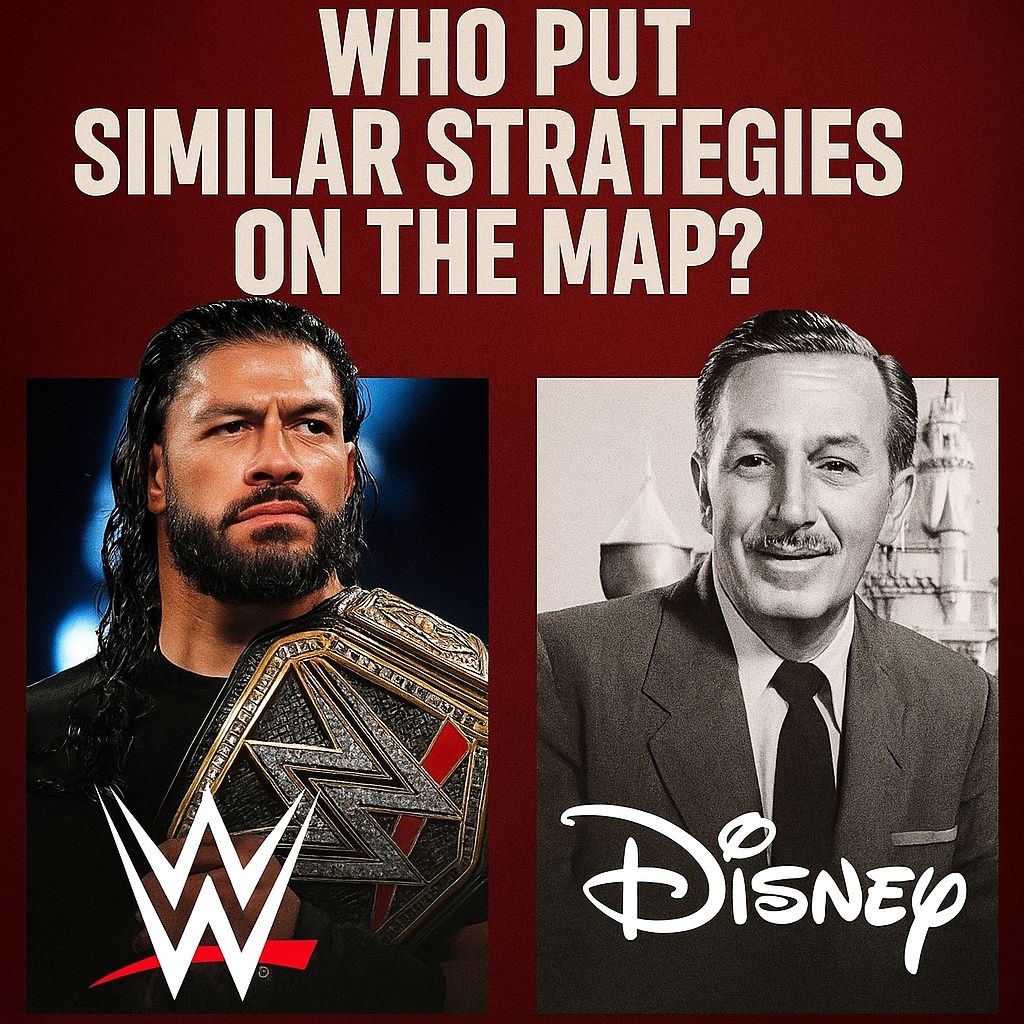- Field Vision Sport
- Posts
- WWE's Blueprint for Global Domination
WWE's Blueprint for Global Domination
How a bunch of blokes in tights taught the sports industry how to really win

Summary: WWE's transformation from regional wrestling territory to £4.5 billion entertainment empire offers a blueprint in how to win the attention economy by treating sports as storytelling, audiences as customers, and content as currency.
THE QUICK READ
WWE's Netflix partnership drove 34% engagement surge for RAW in the UK - ranking top 10 for 9 straight weeks
WrestleMania 41's UK audience hit 35.8 million (77% larger than WWE's general brand reach)
Revenue streams diversified: Media rights (~50%), Live events (25%+ growth), Merchandise (£100M+ annually)
AEW's UK audience dropped 39% after previously leading WWE by 39%. Momentum matters
WWE's "entertainment-first" model beats traditional sports in year-round storytelling and cross-gender appeal • Key lesson: Own your IP, script the narrative, capture the culture
Hello, Hi Visionaries!
Picture this: It's 1985, and Vince McMahon Jr. is sitting in a dingy office, probably eating a sandwich that's seen better days, plotting to take his father's regional wrestling territory and turn it into a global entertainment empire. Fast-forward to 2025, and WWE is pulling in £4.5 billion annually whilst teaching Netflix how to do sports entertainment properly.
Mental, right?
But here's the thing that gets me about this story. it's not really about wrestling at all. It's about understanding the game within the game, and WWE's playbook reads like Sun Tzu meets Disney meets that mate who always wins at Fantasy Football because he actually does the research.
The Netflix Knockout Punch
Let's start with what just happened in our backyard. When WWE moved RAW to Netflix this January, something beautiful occurred. A 34% quarter-on-quarter engagement surge that had streaming executives doing actual cartwheels (probably).
For 9 out of 10 weeks, RAW sat comfortably in Netflix's top 10. That's not just good telly; that's that algorithmic gold. Remember when everyone said Netflix couldn't do live sports? Yeah, about that...

This reminds me of Muhammad Ali's rope-a-dope strategy. Everyone expected WWE to get battered moving from traditional broadcast to streaming. Instead, they used the ropes (Netflix's algorithm) to their advantage and came out swinging harder than before.
The Historical Parallel: Back in 1984, the Olympics proved that American telly audiences would embrace "sports entertainment" when NBC's coverage focused on personal stories rather than just athletic performance. WWE took this playbook and ran with it for four decades.
The European Expansion Play
Here's where it gets interesting for us lot. WWE's first Barcelona SmackDown in March pulled a 0.52 rating in the 18-49 demographic despite US viewership dropping 10%.
Translation? Europe isn't just buying what WWE's selling. We're queuing up for seconds.
This isn't an accident; it's strategy. Think about how Manchester United built their global fanbase in the 90s. They didn't just play football, they sold a lifestyle, a narrative, a reason to care beyond the 90 minutes. WWE's doing the same thing, except their "matches" are designed to leave you wanting more, not satisfied until next season.
The Revenue Game: Diversification Done Right
Let's talk money, because that's where the real lessons live:
Revenue Source | Contribution | 2025 Growth Driver |
|---|---|---|
Media Rights | ~50% of total revenue | Netflix deal, Peacock integration |
Live Events | 25%+ growth in ticket sales | WrestleMania global tours |
Merchandise & Licensing | £100M+ annually | Celebrity collaborations |
Sponsorships | 15% of total | WrestleMania brand activations |
Media Rights (50% of revenue) - The Netflix deal isn't just about streaming; it's about data. Netflix knows exactly who's watching, when they're dropping off, and what keeps them coming back. That's advertising gold.
Live Events (25%+ growth) - These aren't just shows; they're content factories. One WrestleMania creates months of storylines, social media content, and merchandise opportunities.
The Merchandising Machine - £100M+ annually from t-shirts, action figures, and branded everything. When was the last time you bought a Championship League referee's shirt? Exactly.
The Competitive Landscape: David vs. Goliath (But Plot Twist)
AEW came in swinging with billionaire backing and Warner Bros. muscle, leading WWE by 39% in Q4 2024. By Q1 2025? Down 39%.
What happened? AEW played traditional sports business - great matches, athletic competition, treating fans like sports purists. WWE played entertainment business. Storylines that make you care about characters, not just outcomes.
It's like comparing a brilliant Champions League final to Game of Thrones. Both are quality, but one keeps you thinking about it for weeks.
The Attention Economy Masterclass
Here's what absolutely goes into the secret formula: WWE isn't competing with other sports. They're competing with Netflix drama, TikTok, Formula 1: Drive to Survive, and whatever else is fighting for your Thursday evening.
Factor | WWE | Traditional Sports |
|---|---|---|
Content cadence | Year-round storytelling | Seasonal schedules |
Demographic focus | 18–49 cross-gender | Gender-skewed (e.g., NBA: 72% male) |
Monetisation flexibility | Merchandise, film/TV spinoffs, gaming | Reliant on tickets and ads |
Risk mitigation | Scripted outcomes stabilise revenue | Unpredictable results create volatility |
Traditional sports have seasons. WWE has soap opera continuity. Football has transfer windows. WWE has year-round character development. The Premier League has 20 teams. WWE has unlimited storytelling possibilities.
Historical Context: This strategy mirrors what Walt Disney did with theme parks in the 1950s. He wasn't competing with other theme parks (there weren't many), he was competing with every other form of family entertainment. The Magic Kingdom wasn't just rides; it was immersive storytelling.

The Globalisation Playbook
Check this strategy out:
Region | Key Partner | Growth Play | Revenue Focus |
|---|---|---|---|
UK | TNT Sports, O2 Arena | Premium Live Events | Sponsorship + Ticketing |
Europe | TBD (NXT Europe) | Regional development league | Talent monetisation |
US | Peacock, NBCU | Anchor media rights | Licensing + Streaming |
India | Sony, Disney Hotstar | Mass market viewership | Rights deals + Ad revenue |
MENA | Saudi Sports Ministry | Soft power diplomacy | Event hosting fees |
Africa | YouTube, Meta | Digital-first growth | Attention acquisition |
Each region gets WWE flavoured for local tastes whilst maintaining global brand consistency:
India: Hero archetypes and mass-market appeal
Saudi Arabia: Prestige and exclusivity (those Crown Jewel events)
UK: Premium live experiences and cultural integration
US: Anchor partnerships and streaming innovation
It's McDonald's strategy applied to sports entertainment - familiar everywhere, customised for local markets.
What This Means for Your Business
For Brand Managers: Stop thinking in sports seasons. Think in narrative arcs. Nike's "Just Do It" isn't seasonal. It's eternal storytelling.
For Media Rights Holders: Data is the new merchandise table. Streaming platforms aren't just distribution; they're intelligence gathering.
For Startup Founders: WWE proves that being "fake" doesn't matter if the emotional connection is real. Focus on engagement over authenticity.
For Sports Marketers: Build characters, not just athletes. Personalities drive merchandise, social media, and long-term fan loyalty.
The Bottom Line
WWE's success isn't despite being scripted. It's because of it. In a world where attention is currency and stories are product, WWE shows us that controlling your narrative beats hoping for the best outcome.
They've turned sport into entertainment, entertainment into business, and business into a global and cultural phenomenon. Not bad for a company that started with blokes pretending to fight in front of a few hundred people.
The lesson? Sometimes the best way to win is to change the rules of the game entirely.
TAKEAWAY FOR PROS:
✅ Own your intellectual property - it's your long-term competitive advantage
✅ Think Netflix, not Sky Sports - algorithm-friendly content beats traditional broadcasting
✅ Global expansion requires local flavouring whilst maintaining brand consistency
✅ Diversify revenue streams beyond traditional sports monetisation
✅ Build personalities that transcend the sport itself
✅ Use live events as content amplifiers, not just profit centres
Reply